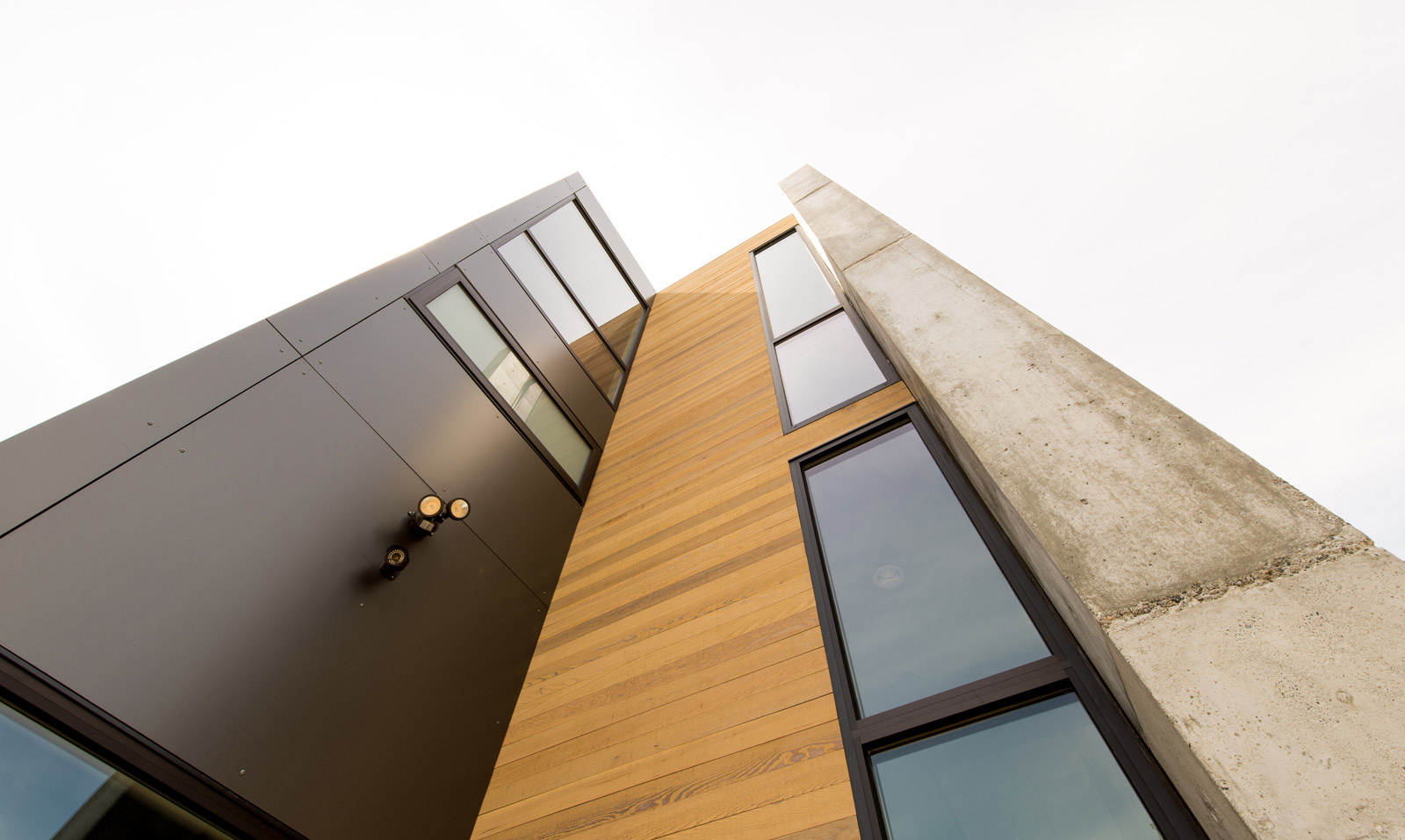
[All images by BUILD LLC]
There’s an important design concept that most architects study during their educations. It’s typically associated with old-school modernists like architect Louis Kahn and projects dating back to the 1950’s and 60’s. Simply put, the concept aims towards grouping all of the service spaces of a building together. These often include the stairways, hallways, utilities, bathrooms, or any other support spaces required to serve the primary functions of the building. Taking the concept a step further, when grouped thoughtfully, these service groups can become a design feature in and of themselves.

Being the rather organized architects that we are, this design concept has always resonated with us, not just from a systematic standpoint, but also in terms of visual harmony, authenticity and even the cost-effectiveness of such a straight-forward strategy. It’s a design concept that’s been integrated into many of our projects, regardless of scale. While the effectiveness of this design concept improves with the increasing scale of a project (like multi-family buildings and commercial structures), we’ve also found it to be a powerful design tool on smaller projects like single family residences.
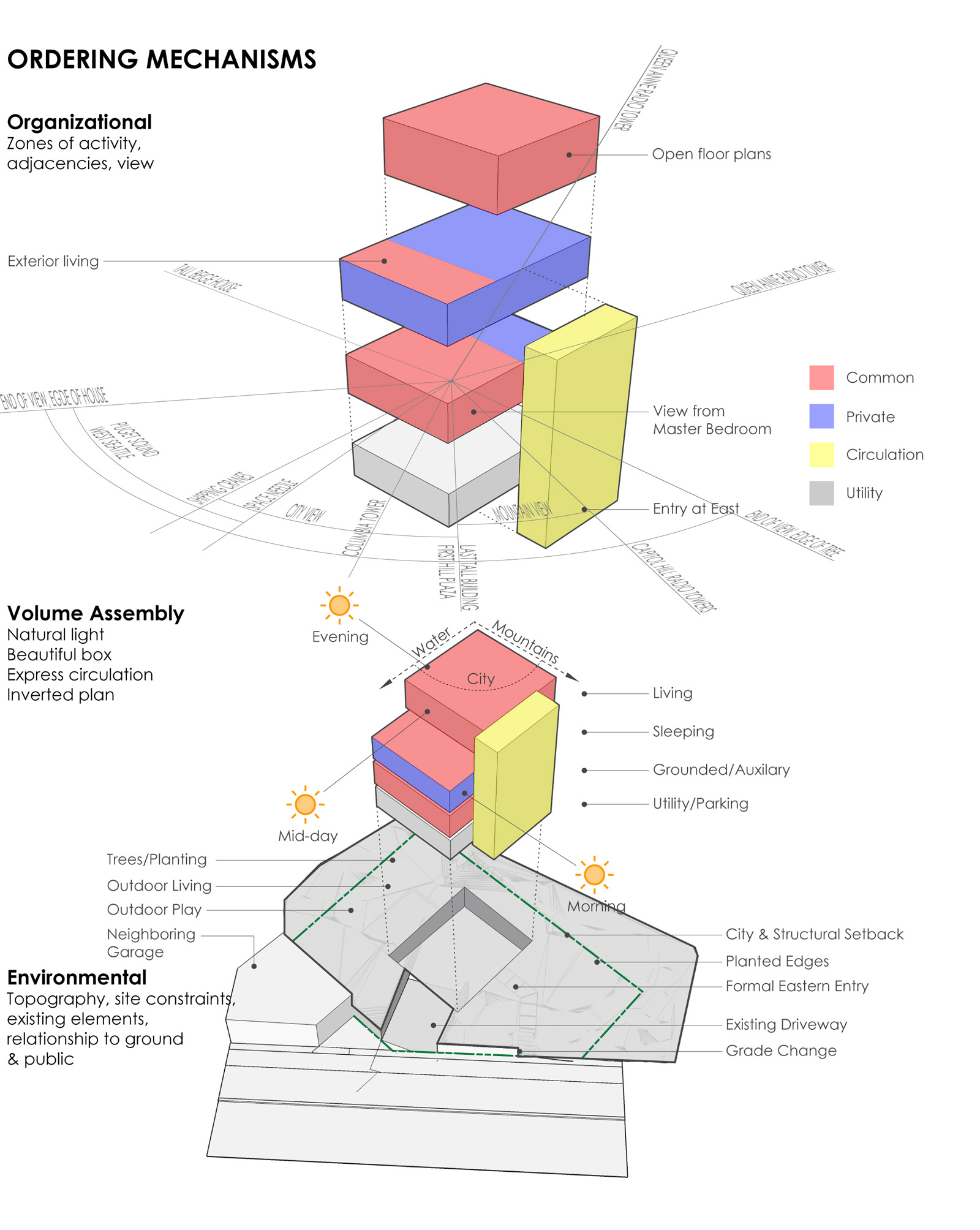
BUILD’s recently completed Desai Residence on Seattle’s Queen Anne Hill uses this organizational strategy and groups the vertical circulation services together within a common volume extending the height of the structure (illustrated in yellow on the diagram above). Because the nature of this circulation volume is different from the primary volume of the house, there is a deliberate material change to cedar. Bookending the circulation volume is a thirty-foot tall concrete wall which provides natural texture and character to the interior circulation volume, while acting as a backdrop to the landscaping outside. Separating the cedar and concrete is a vertical slot window which gives hints to the view awaiting at the top.
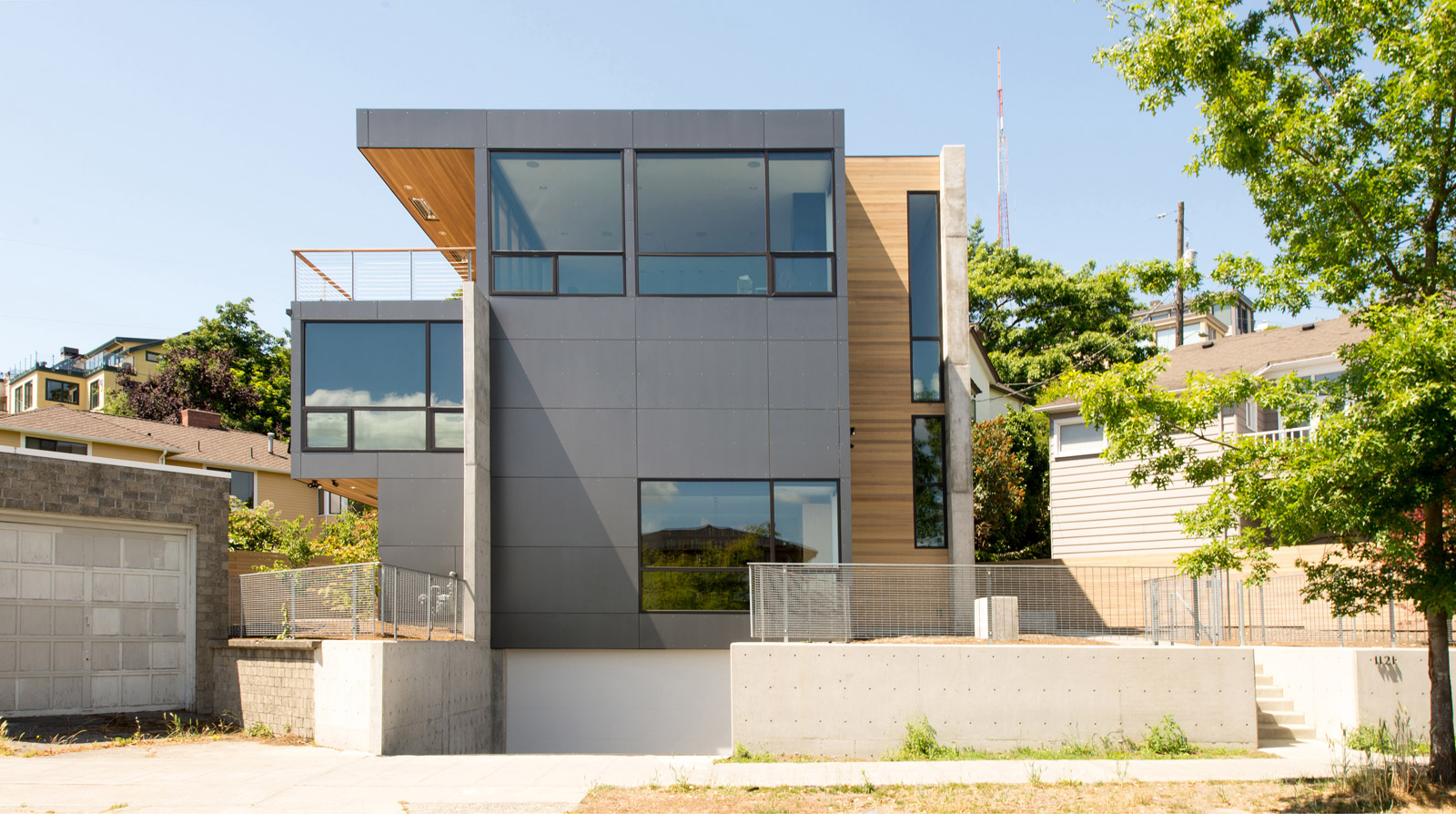
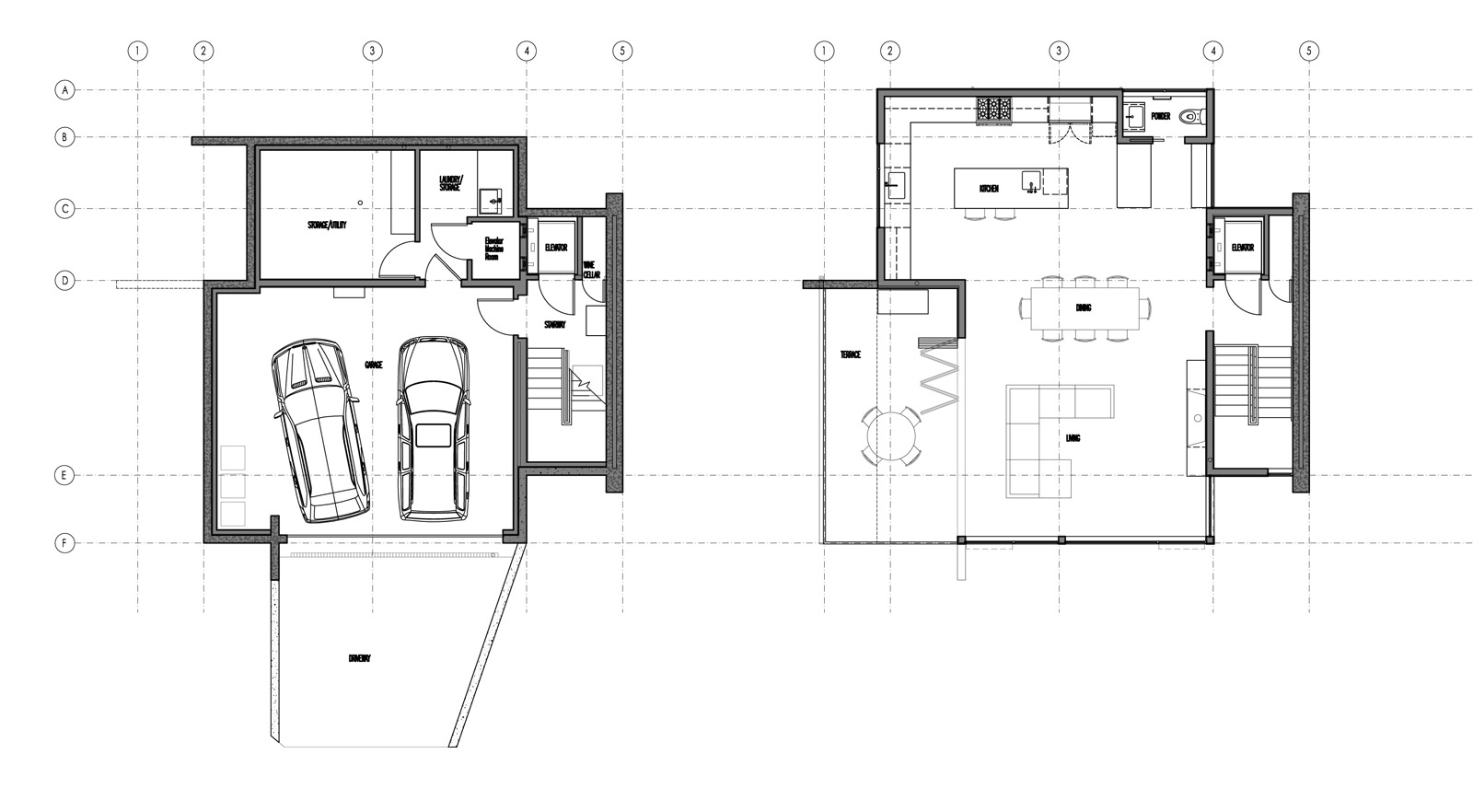
A stacked, open-tread oak stairway connects the subgrade garage and three levels of habitable area together, and because the of the stair’s switch-back configuration, the landing point is in the same position on each floor. With long hallways eliminated, the compact stair landing serves both the up and down stair travel paths and allows access to a residential elevator at each level.
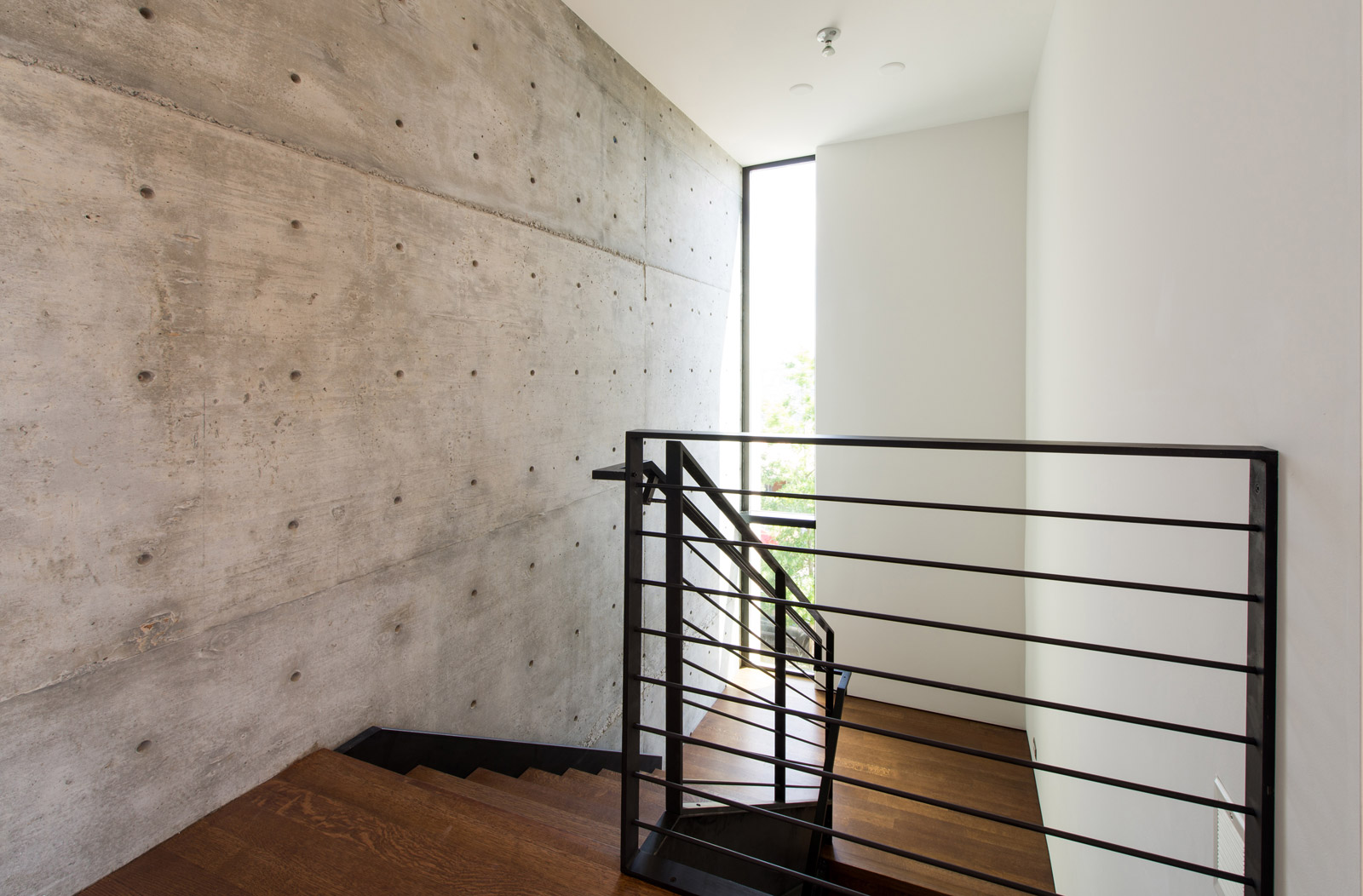

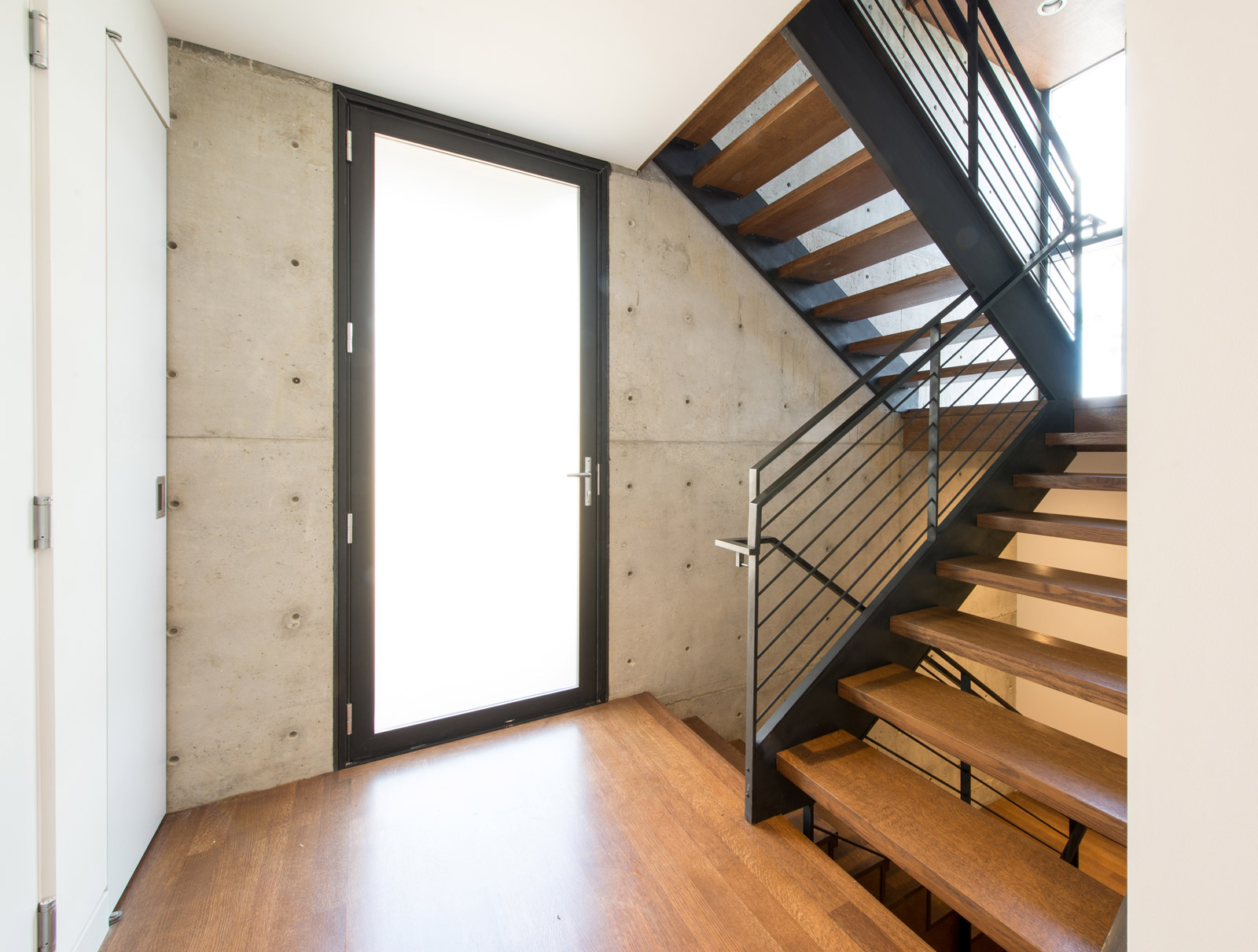
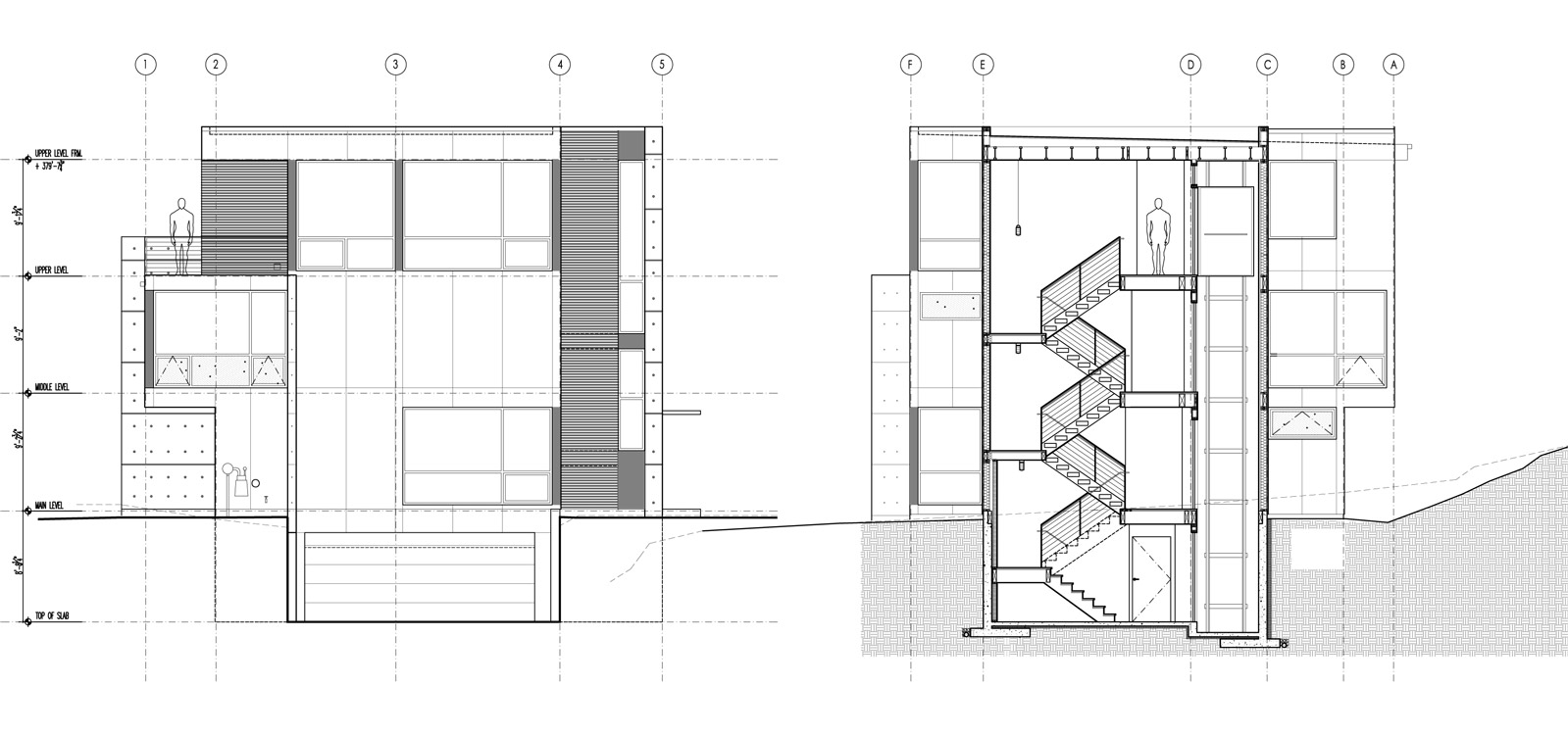
The vertical distance between the garage (at the sub-grade level) to the kitchen (top level) presented a logistical challenge with all of life’s daily patterns (e.g., kids, groceries) and a cost-effective residential-sized elevator solved this issue nicely as well as future-proofing for accessibility.

The stair core is approximately 6’-8” wide and the elevator framing is approximately 4’-8” wide, leaving a 2’ wide portion for deep storage on each level.
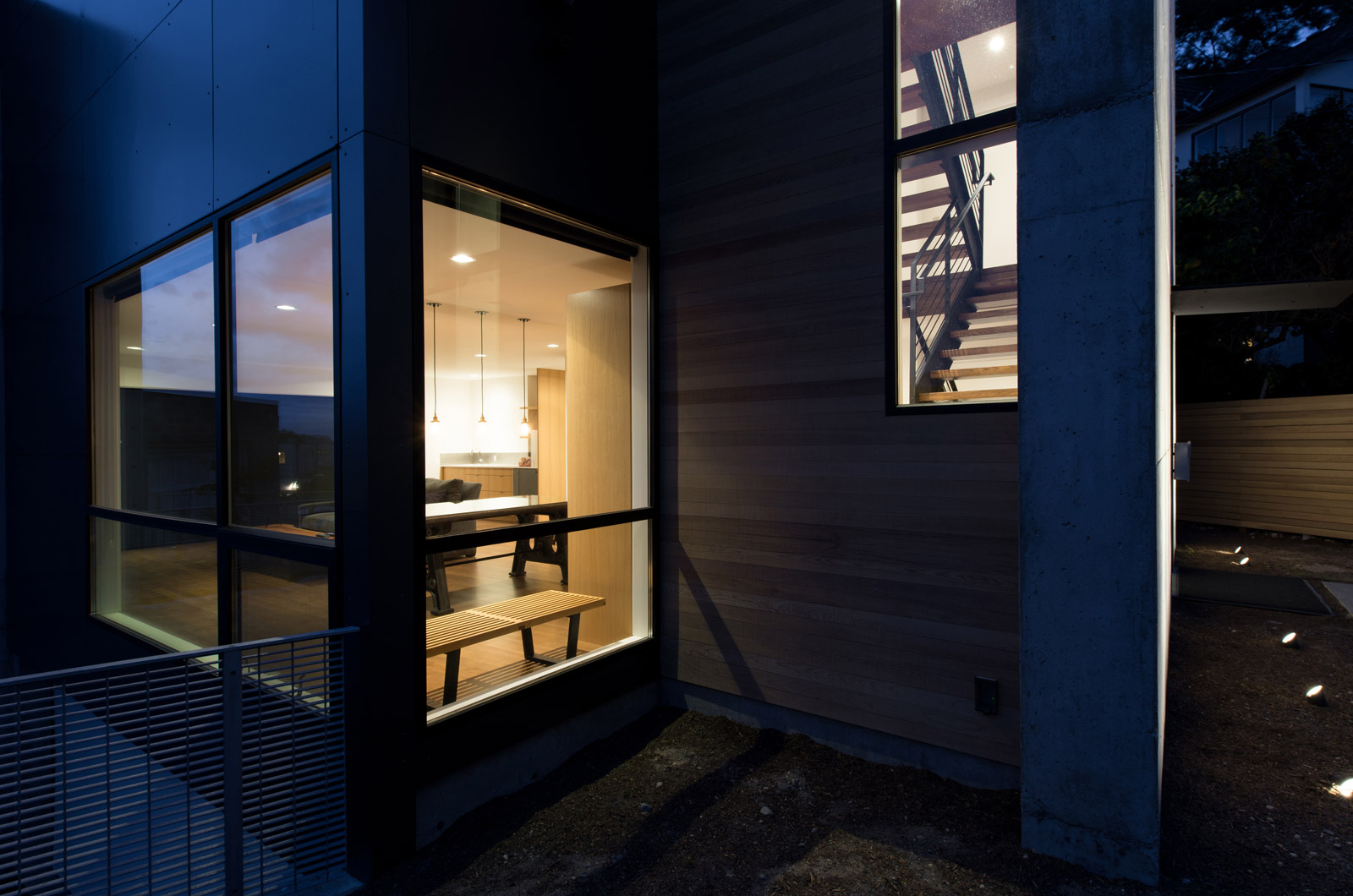
This application of the circulation volume works extremely well for this application. It keeps the stair and elevator designs tidy and organized, it substitutes hallway space for more precious living area, and it provides an exterior envelope that modulates the building while expressing the interior function. Stay tuned for more circulation volume strategies in our residential, commercial and multi-family work.
Cheers from Team BUILD





